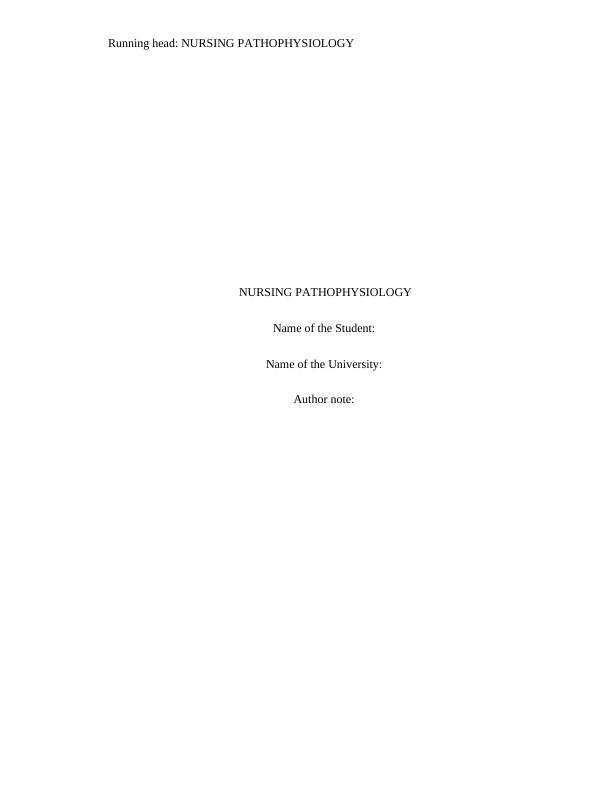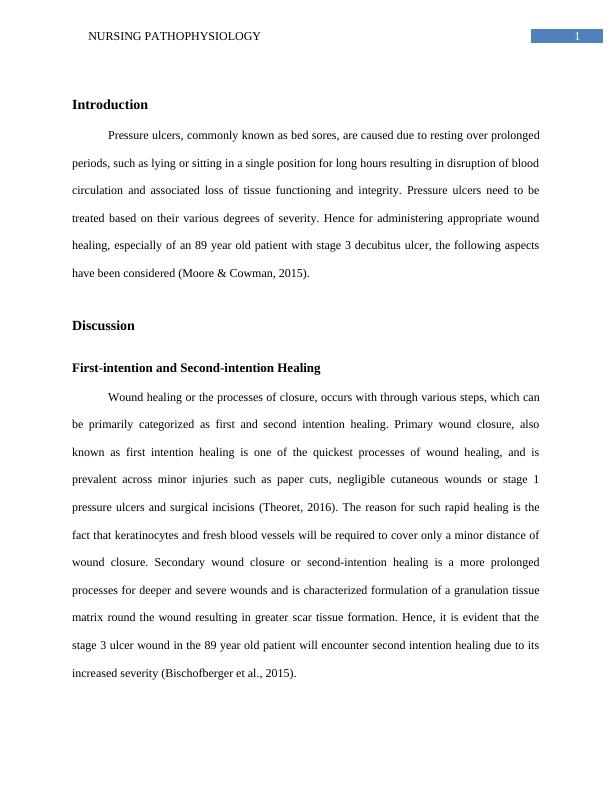Nursing Pathophysiology
5 Pages915 Words72 Views
Added on 2023-03-23
About This Document
This document discusses wound healing, factors delaying wound healing, and strategies to improve wound healing in nursing pathophysiology. It covers the stages of wound healing, such as first-intention and second-intention healing, and factors like aging and medication that can delay the healing process. The document also provides strategies to improve wound healing, including regular dressing changes and maintaining adequate moisture levels. The importance of personalized care plans based on the patient's age, medication, and wound stage is emphasized.
Nursing Pathophysiology
Added on 2023-03-23
ShareRelated Documents
End of preview
Want to access all the pages? Upload your documents or become a member.
Case Study on Holistic Wound Management
|7
|1686
|370
Management of Diabetic Foot Ulcers: Best Practices for Care Professionals
|8
|2302
|202
Wound Case Scenarios - Desklib
|10
|1805
|114
Pathophysiological Assessment and Nursing Care Priorities on Case Study Review
|9
|2534
|342
Type II Diabetes: Pathophysiology, Causes, and Nursing Management
|11
|3177
|113
Pathophysiology and Nursing Priorities in Post-Operative Wound Infection
|9
|2571
|80


